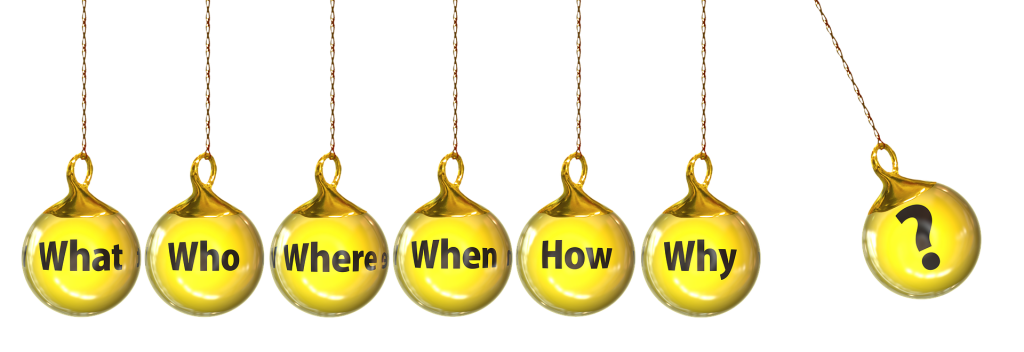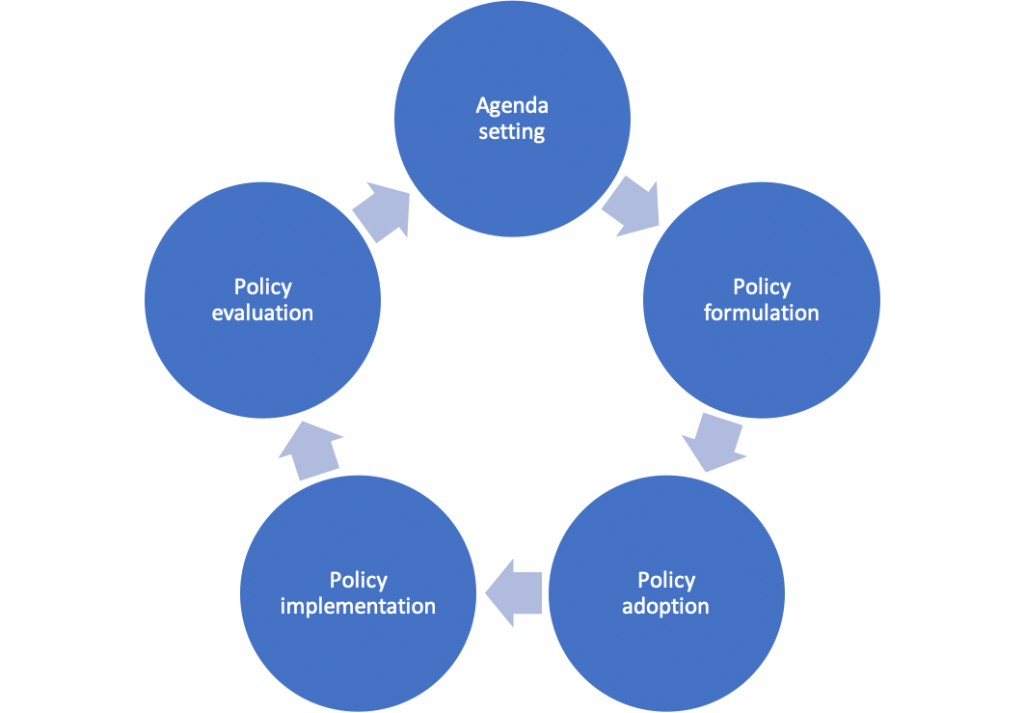Developed by:
Dr. Martin Gaal – University of Saskatchewan
Overview
This is the final module of POLS 326 – Comparative Public Policy. So far, in this course, we have sought to accomplish three broad goals.
First, we have sought to introduce and survey the field of public policy. We sought to answer some of the key questions to guide our study. What is public policy? Why is it significant? What are some examples of public policy issues? We also introduced the cycle of policymaking and the roles of those in policymaking. This added some more questions to answer. Who are the policymakers? For whom and to what purpose do they make policy?
Second, we sought to introduce the frameworks of comparative policy analysis. Again, this added some more questions to ponder. How can we compare policy? Should we look for similar cases to compare, seeking to isolate variables of difference? Should we look for different cases that yet share similar outcomes? Should we look to or build typologies that explain policy processes or policy outcomes? What about the voices not commonly heard? What does a critical analysis of public policy look like?
Third, we introduced some examples of public policies and what a comparison of them might look like, including environmental policy, immigration and citizenship policy, same-sex marriage policy, and health care policy.
What we are asking you to do in this module is reflect on the course as a whole. We are asking you to reflect on the course material: public policy, comparative public policy, and the issues of comparative public policy analysis. We are asking you to reflect on what you have learned. Finally, we are asking you to reflect on both the utility of comparative public policy analysis and some areas of enquiry that you think could benefit from such analysis.

Figure 12-1: What, Who, Where, When, How, Why? Source: https://pixabay.com/illustrations/question-who-how-what-where-when-2415069/ Permission: CC0 1.0 Public Domain. Courtesy of geralt.
When you have finished this module, you should be able to do the following:
- Critically reflect on the field of public policy.
- Critically reflect on the utility of comparative public policy analysis.
- Critically apply your insight into contemporary public policy issues.
N/A
- Before you begin, take some time to review the previous 11 modules of the course to refresh your memory of what has been covered over the term. Revisiting the Learning Objectives from each module, as well as skimming through the Learning Journal entries you’ve completed, is a good way to do this.
- Proceed through the module Learning Material.
- Complete the Learning Activities as you encounter them. Some of these will prompt you to complete written responses in your Learning Journal (see Canvas for more details).
- Review the Learning Objectives and reflect upon the course.
- Check the Class Syllabus for any additional formal Evaluations due or graded activities you must submit.
N/A
Learning Material
Introduction
What have we learned in this class? Well, we started in Module 1 from a very basic premise. Public policy matters. Understanding how public policymaking happens matters. Public policy is operative in every aspect of our lives. It defines our models of governance. It defines who has influence over whom and how. Next, we sought to introduce frameworks to understand and critically assess public policymaking and public policy outcomes. We looked at the stylized concept of the policy cycle, as well as its limitations. These included the five stages of the iterated policy cycle: the agenda-setting, policy formulation, policy adoption, policy implementation, and evaluation stages (see Figure 12-2).

Figure 12-2: Five stages of the policy cycle. Permission: Permission: Courtesy of Distance Education Unit (DEU), University of Saskatchewan, based on https://www.researchgate.net/publication/242347923_Dynamic_foresight_evaluation
In Module 2, we introduced the academic roots laid by John Stuart Mill in the study of public policy, including the method of agreement and the method of difference. We looked at the typology approach of studying public policy, including the cultural, economic, political, institutional, and critical approaches.
Modules 3-5 introduced the ideas, interests, and institution approach to public policy analysis. Before delving into this approach, we established the caveat that it is not just difficult but disingenuous to separate these three approaches. Yet, we also argued that by isolating each, even if artificially, we may derive insight into the issue under examination. Ideas introduce cognitive paradigms, normative frameworks, world culture, framing, and programmatic ideas. Each provides insight into the ‘hows’ and ‘whys’ of policy continuity and policy change. While acknowledging the role of ideas, the interests approach suggests that our perception of threat and opportunity determines action. In other words, ideas may shape what we believe and expect, but interests motivate action. The institution approach looks to those formal and informal structures that constrain and enable behaviour. In particular, historical institutionalism looks to historical contingencies, critical junctures, and path dependency to understand the structure of the policy environment. Rational choice institutionalism looks to how norms, rules, and procedures shape what actors believe to be in their self-interest and, therefore, shape behaviour. Sociological institutionalism suggests a logic of appropriateness shapes behaviour rather than a logic of consequence. In other words, expectations of ourselves and the expectations of us by others are more, or at least as much, a determinative of behaviour than rationally calculated self-interest.

Figure 12-3: Ideas, Interests, Institutions. Source: https://pixabay.com/illustrations/media-internet-message-network-2082641/ Permission: CC0 1.0 Public Domain. Courtesy of ar130405.
In Module 6, we turned our attention to politics in public policy by introducing the Multiple Stream Approach. The MSA argues that a policy problem does not drive policymaking as there are many issues that need attention. It also suggests that neither policy solutions nor policy entrepreneurship drive policymaking – decisionmakers are inundated with such proposals. Rather, it suggests that political will is a key ingredient in opening a policy window – that space where policymaking can happen.
In Module 7, we closed our look at the frameworks and context of comparative public policy analysis by recognizing the need, but often under-appreciated, impact of the global dimensions on policymaking.
In Modules 8-11, we applied all the frameworks of comparative public policy analysis to more concrete public policy issues: environment policy, immigration and citizenship policy, same-sex marriage policy, and healthcare policy.
In this final module, we will ask you to reflect on the course material, what you have learned, and how you might apply it in the future. We will do so with three learning activities.

Figure 12-4: A protestor holds a sign that says “Fight today for a better tomorrow.” Source: https://unsplash.com/photos/iRAvvyWZfZY Permission: Public Domain. Photo by Markus Spiske on Unsplash
Reflective Learning Activities
For each of the following Learning Activities (to guide your final Learning Journal entries for the course), keep the following important notes in mind:
- This is not an academic exercise but rather one for reviewing the course materials and personal reflection on your own learning.
- You do not need to look for external sources or definitions.
- You can and should look at the earlier modules and your past Learning Journal entries.
Use the following questions to guide an entry in your Learning Journal.
- What is public policy?
- How does public policy influence your life?
- What are some of the most pressing public policy areas:
- In Saskatoon?
- In Saskatchewan?
- In Canada?
- Globally?
Use the following questions to guide an entry in your Learning Journal.
- What is comparative public policy analysis?
- What is the utility of studying public policy comparatively?
- How might you apply comparative public policy analysis to one of the policy areas you identified in Learning Activity 12-1, question 3?
Use the following questions to guide an entry in your Learning Journal.
- How did you understand comparative public policy analysis before this course?
- What aspects of the course did you find most interesting?
- What aspects of the course did you find most challenging?
- How might you use the material in this course in the future? Either academically or professionally?
Conclusion
This course has introduced the definition, processes, and frameworks of public policy and comparative public policy analysis. We hope that you, as the student, have gained some insight into what comparative public policy is, why the study of it matters, and how you, as a public policy analyst, might apply what you have learned. We believe, as faculty, that understanding public policy and comparative public policy analysis are important not just for academics and practitioners but for every member of a political community. The world we live in is facing so many important policy issues: environmental threats, democratic governance, food security, human rights, systemic racism… the list is almost as endless as the number of people and groups advocating for change. These decisions mustn’t be left to the elites and government. We all must be aware of the systemic agenda issues and advocate for those issues we believe important to be placed on the institutional agenda. In the end, we come back to the same point we opened this course with – public policy matters. Comparative public policy analysis provides a way to learn from what others have done, reflect upon our own practices, and find new ways to address policy issues creatively.
Review Questions and Answers
N/A
Glossary
N/A
References
N/A
Supplementary Resources
N/A
